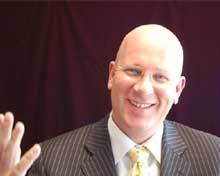Middle income Americans have become more exposed than ever to being audited by the U.S. Internal Revenue Service (IRS). If caught cheating on their tax returns, filers can be asked to pay up to $4,100 more in income taxes.
Increased Audits for Middle Income Taxpayers
Since 2000, the number of audits on tax returns filed by those making $25,000 to $100,000 has tripled. This dramatic increase is part of a system-wide change in audit strategy. The IRS claims that too little attention was being paid to middle income taxpayers prior to 2000. They also admit that there was not enough focus on the highest income taxpayers – those making $1 million or more.
In 2006, the chance of a middle income taxpayer being audited was one in 56. During the same year, the highest income filers had a one in 16 chance of being audited and lower income filers – those making less than $25,000 per year – had a one in 94 chance. According to the IRS, this strategy is necessary due to a decreased number of IRS agents and increasing complexity of the tax system.
While the increased audits have been criticized by many, they have proven to be successful. Even if each audit is given less time and attention than before, they are causing people to be more honest on their tax returns. Tax revenue from enforcement actions increased nearly $15 billion in 2006 as compared to 2000.
Alternative Minimum Tax Pitfalls
The second risk to middle class taxpayers is their vulnerability to the alternative minimum tax (AMT). Also known as the "wealth tax," AMT was originally intended to prevent tax avoidance by the rich with high-end tax shelters that create investment income.
However, Tax Policy Center Director Len Burman testified at the House Ways and Means Select Revenue Measures Subcommittee that "because of poor design, millionaires are actually less likely to owe AMT than middle-income people with kids."
Many are now questioning how this code backfired.
One reason is that the AMT does not allow for personal exemptions, standard deductions, or many other tax breaks that benefit middle income families. This causes the household’s taxable income to be higher and is therefore taxed at a higher rate. Examples of these exemptions and deductions that can no longer be taken include child tax deductions and adjustments for state and local taxes in some areas.
Another way the AMT affects middle class families is that the income-exception levels are set too low. Income exemptions used when calculating AMT have not kept up with inflation even though salary increases have. For example, in 1969 the income-exemption level was $30,000 for all fliers. Based on inflation, that would equal $165,000 today. However, the current exemption levels are only $45,000 for joint filers and $33,750 for individual filers.
A final reason that the AMT has not suited its intended purpose is that many millionaires earn a great deal of their income from investment assets. Capital gains and dividends are not recognized as ordinary income and are taxed at a lower rate.
Records show that only around three percent of AMT payers in 2006 were millionaires with tax-shelters – the codes target audience. Most people who owed the tax earned between $200,000 and $500,000. One-forth of the AMT payers made $75,000 to $200,000 in 2006. These are groups that were affected by the inability to use the child tax deduction or state and local tax deductions.
Congress is in the process of holding hearings for the reform of the alternative minimum tax. Some committee members are calling for the AMT minimum income to be set at $200,000. Others are calling for a complete repeal of the code.
Subscribe to:
Post Comments (Atom)

1 comment:
http://cebuentrepreneur.com/raising-capital/missingmoneycom-unclaimed-money-to-start-a-business
Post a Comment